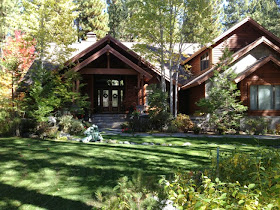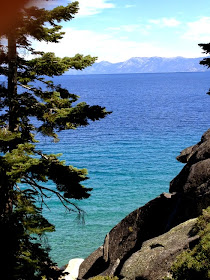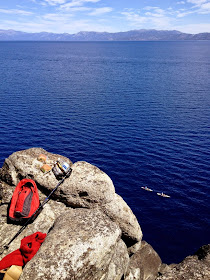Okay, you’ve written your masterpiece. What next?
Here are 13 things I believe are critical to know.
1. Slow down. I know you’re excited to see your work in print. But don’t rush to publish. If you do, you will likely regret it. (A bad cover, lack of editing, and the wrong publishing approach won’t just prevent your book from selling but will lead to a preponderance of bad reviews, which can ruin your career.)
2. Work on your platform before you publish. If you want to get an agent and pursue a traditional publishing deal, may the force be with you. But realize that for New York publishers, the quality of your book is much less important than your platform, i.e., how many people can you reach and entice to buy your book? If you are the CEO of a Fortune 500 company with 25,000 employees who might buy your book or you have a popular syndicated newspaper column or radio or TV show, your book will find eager publishers. But even if you’ve written a masterpiece, if your email list is only 43 people, you won’t find a publisher. In which case…
3. Consider self-publishing. The possibilities today are endless. But don’t fall for a slick website sell-job. Do your research. Stay away from internet publishing service companies like iUniverse, Xlibris, Author House, Publish America and a thousand others… Many companies like these have been sued for a wide range of false promises. They sell you on a cheap publishing concept and then try to up-sell you on publicity packages. They provide little or no editing without a huge expense, bad covers done by a college intern even when you pay well for it, and no effective marketing despite what they promise. The stories I’ve heard from authors with these outfits and the books I’ve seen from these companies are astonishing in their ineptness. Before you pick a publishing service, try finding an author who is actually making a living working with the company you're considering. Try finding a reviewer who will give serious consideration to a book from one of these companies. Find one person who actually sold two or three thousand books after paying thousands for their publicity package. Look at the Amazon sales ranking for books by these companies’ authors. You will be amazed at how lame internet publishing programs really are. The only thing most of these companies do really well is make money by sucking in naive authors who are blinded by the stars in their eyes.
4. Bottom line? If you self-publish, either start your own company or go with Amazon’s Create Space. They do the same thing the so-called self-publishing companies do, only they do it for free. (Note: Amazon also offers upgrade services at high prices. Don’t do it.) When you need an editor (you always need an editor!), hire two or three yourself. When you need a cover designer, hire one yourself. You might ask, "Is starting a business easy?" Of course, not. Writing a book wasn't easy, either. "Is starting your own business worth it?" Of course it is, just like writing a book was worth it.
5. You’ve spent a thousand hours or two thousand hours writing your book. Spend at least a week or two researching the business. (A savvy author spends as much time at the business of writing as she does writing. Maybe much, much more. Yes, hundreds, even thousands of hours.) Read blogs on publishing, self-publishing, selling books. Read books on the same. I recommend Marilyn Ross's Complete Guide to Self-Publishing and Dan Poynters Self-Publishing Manual. Put some serious effort into learning about the business. And if you are like me and sometimes miss the obvious, here's a tip. The simplest and most effective way to research anything is to go to Google and type what you want to know. "What are the downsides to internet book publishers?" "Pros and cons of Kindle publishing" "Best way to market ebooks" etc., etc.
6. Note: Many, many successful self-published authors point out that unless you own your ISBN number, you aren't really self-published, and you won't have the control you need to be effective in your publishing. If you don't understand all the implications of that statement, your research will explain it all.
7. I've already mentioned your platform, which is those people who know about you and to whom you reach out when you come out with a book. After you figure out how you're going to publish - and before you actually start the process - it's time to get really serious about your platform. Work on your email list. Trade business cards with every person you meet. Get their email address. Same for your snail mail list. Write a blog. Post at least once a week. Make it interesting and connected in some way to your book. Don’t make it a navel-gazing exercise about yourself and your inner world of writing angst. Save that for your writer’s support group. If you provide useful information on a weekly blog post, people will find your blog. In fact, after a year or two of weekly posts, you will likely be amazed at how many readers find your blog. (I was.) And once they appreciate your writing, they will try your book. Plan an email and postcard snail mail campaign. Plan a newsletter. Plan promotions, giveaways, and other ways of getting readers to try your book (and future books).
8. Set up your public Facebook page and your website. Make sure your website name is a dotcom based on your author name, i.e., MarieRodriguezAuthor .com. If you don’t know how to do a website, don’t hire it done, learn to do it yourself. If you hire it, you will pay large amounts of dollars and you will never be able to tweak it and update it yourself, and there will always be a lag time before your hot new information gets posted, because your web designer will be on vacation when you most need help. Websites are not hard to do. I know because I learned. It wasn’t easy, but it was easier than cooking a comprehensive Thanksgiving dinner for 12. I bought several books on it and took a class at the local community college.
9. Start on your next book and the next after that. Except for Margaret Mitchell and Lee Harper, no author makes it with one book. And today, more than ever, an author needs to have many books. Restaurants can’t make a living with one entree. Neither can you. Get the next book and the one after that under way.
10. Read blogs on writing and marketing. Many authors write about a wide range of topics. But most do occasional entries on the business of writing. Here are my blogs on writing.
11. Find successful authors who are relatively new to the business, i.e., their first book came out in the last three or four years. Mimic what they do. Study their books (cover, size, interior formatting, price) study their publishing model, study their website and their Facebook page, study their events schedule, how they do their talks and what they talk about, their book signings, etc. (For example, you will learn that most events done by most successful authors are not connected to bookstores. I’m not talking about famous authors who have hundreds of fans following them wherever they go, authors who get sent on vanity book tours by their publishers. I’m talking about the rest of us working authors who are not celebrities. Bookstores are great, and you should support them, but more than anything an author needs to get in front of large numbers of people, and, most of the time, bookstores don’t provide large numbers of people. This correlates to the fact that well over half of all books sold are not sold in bookstores. They are sold at gift shops and Target and Sam’s Club and Walmart and Costco and, most of all, at Amazon.)
12. Focus everything you do, from book design to marketing, on Amazon. Love it or hate it, Amazon now sells about half of all books sold, and that number is climbing. You simply cannot afford to ignore Amazon. In the world of ebooks, which is how most fiction is now sold, Amazon sells approximately 65% - 70% of all ebooks sold. An author can survive even if she pays no attention to other outlets for book sales, and many such authors thrive. But no author can survive by ignoring Amazon. So learn to work with them. Read blogs on the best ways to market your books on Amazon and the best way to put your books into the Amazon system. (I use Amazon Advantage to sell my paper books.)
13. Last, but most important of all for fiction writers, study up and learn how Amazon’s Kindle program works. As mentioned in point #12, whether you are published by a Big 5 publisher in New York or going it alone, Kindle is now where the money is made. I strongly recommend formatting your own books to Kindle and uploading them yourself. Like building websites, it’s not hard to learn. It’s tedious, but not hard. NEVER pay a percentage to some company who says they’ll format and sell your Kindle books for you cheap. Yikes! The beauty of Kindle, in fact the whole point of Kindle from an author's perspective, is that you can get real-time information on sales not just "sales ranking" but actual sales numbers. You do a talk, then you go home to see what kind of bump you got in Kindle sales. You exhibit books at a festival, and you check your Kindle numbers to see how effective your free postcard handout is. You do a radio interview, you judge its success by your Kindle numbers. You use Kindle’s various promotions to acquire hundreds or even thousands of new readers. You adjust prices up or down and see how readers respond. But if you give up Kindle control to a third party, your hands are tied and you can’t do any of these things. It could be said that if you are in control of your Kindle program, you are in control of your career. If someone else is in control, well, you've given them the only keys to your vehicle.
In sum, this is the greatest time in history to be an author. There are no more gatekeepers deciding who gets to be published and taking most of the profits at the same time. Any author can now make their book available to the world. And (as in any line of work) if that author is knowledgeable, focused, and willing to work very hard, that author can have a writing career, the best job in the world!
How bad do you want it? The spoils go to those authors who want it the most. If you are one of those, go for it!





























































